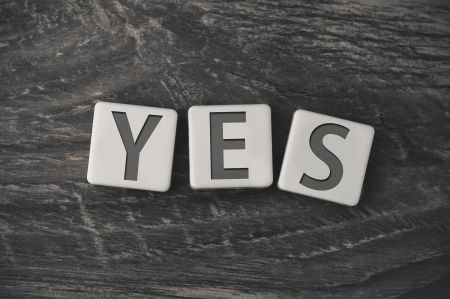Difference between revisions of "Yes, and"
| (4 intermediate revisions by 2 users not shown) | |||
| Line 2: | Line 2: | ||
! colspan = "4" | Type !! colspan = "4" | Team Size | ! colspan = "4" | Type !! colspan = "4" | Team Size | ||
|- | |- | ||
| − | | | + | |[[:Category:Me, Myself and I|Me, Myself and I]] || '''[[:Category:Group Collaboration|Group Collaboration]]''' || [[:Category:The Academic System|The Academic System]] || [[:Category:Software|Software]] || [[:Category:Team Size 1|1]]''' || '''[[:Category:Team Size 2-10|2-10]]''' || '''[[:Category:Team Size 11-30|11-30]]''' || '''[[:Category:Team Size 30+|30+]]''' |
|} | |} | ||
== What, Why & When == | == What, Why & When == | ||
| − | "Yes, and..."-thinking is a technique used in improvisation. It originates from and is most commonly known in improvisational theater, but it can also be applied in any other context where new ideas shall be developed. Spontaneous improvisation building on "Yes, and..." can improve brainstorming processes and encourage team members to better cooperate and listen to each other in the process of idea generation. You may call it a proper philosophy on how to work and communicate with each other. | + | "Yes, and..."-thinking is a technique used in improvisation. It originates from and is most commonly known in improvisational theater, but it can also be applied in any other context where new ideas shall be developed. Spontaneous improvisation building on "Yes, and..." can improve [[Glossary|brainstorming]] processes and encourage team members to better cooperate and listen to each other in the process of idea generation. You may call it a proper philosophy on how to work and communicate with each other. |
== Goals == | == Goals == | ||
* Generation of new ideas | * Generation of new ideas | ||
| − | * Improved communication | + | * Improved [[Glossary|communication]] |
* More engaging, productive teamwork | * More engaging, productive teamwork | ||
| Line 31: | Line 31: | ||
---- | ---- | ||
__NOTOC__ | __NOTOC__ | ||
| − | [[Category: | + | [[Category:Hacks, Habits & Tools]] |
| − | [[Category: | + | [[Category:Group Collaboration]] |
| + | [[Category:Team Size 2-10]] | ||
| + | [[Category:Team Size 11-30]] | ||
| + | [[Category:Team Size 30+]] | ||
| + | |||
| + | The [[Table_of_Contributors|author]] of this entry is Christopher Franz. | ||
Latest revision as of 14:24, 2 April 2024
| Type | Team Size | ||||||
|---|---|---|---|---|---|---|---|
| Me, Myself and I | Group Collaboration | The Academic System | Software | 1 | 2-10 | 11-30 | 30+ |
What, Why & When
"Yes, and..."-thinking is a technique used in improvisation. It originates from and is most commonly known in improvisational theater, but it can also be applied in any other context where new ideas shall be developed. Spontaneous improvisation building on "Yes, and..." can improve brainstorming processes and encourage team members to better cooperate and listen to each other in the process of idea generation. You may call it a proper philosophy on how to work and communicate with each other.
Goals
- Generation of new ideas
- Improved communication
- More engaging, productive teamwork
Getting started
There are two parts to "Yes, and...": the "Yes!" and the "and...". The "Yes" means not to immediately judge other people's ideas and decline them if they do not seem suitable, but rather be positive about them. The "and..."-element encourages the addition of new information and thoughts which can lead to more complex ideas.
"Yes, and..." does not necessarily mean that every new sentence has to begin with the words "Yes, and". Instead, it is about the mental attitude of accepting whatever other people offer and continuing or expanding upon their line of thought. It means going with the flow instead of blocking ideas and losing the dynamics of an ongoing discussion. "Yes, and" is about losing one's ego and fostering positivity in a group. For a theatre audience, this is more fun to watch; and for team members at work (in any field, really), it is both more fun to engage with and more productive than being overly critical and blocking ideas as soon as they are formulated.
Links & Further reading
Sources:
- ThoughtCo.- Improve Acting Instincts and Performance With This Clever Improv Game
- Wikipedia - Yes, and
- Medium - Saying "Yes, and" - A Principle for improv, business & life
Youtube - Big Think video on the Yes, and - principle
The author of this entry is Christopher Franz.
